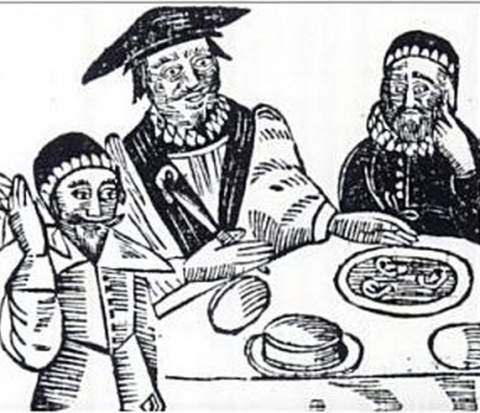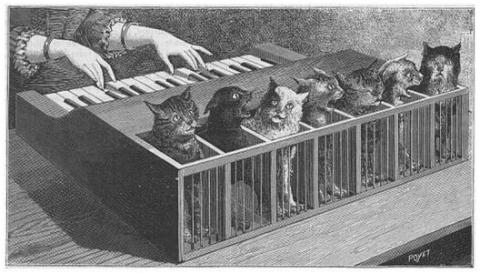
Priscilla ‘Priss’ Fotheringham was one of 17th century London’s more colourful prostitutes and brothel madams. Born in Scotland around 1615, the young Priss was reportedly a “cat-eyed gypsy, pleasing to the eye”. By her early 30s, however, Priss’ looks had faded, thanks to a bout of smallpox and years of swilling gin.
In 1652, Priss made the first of several court appearances when she was charged with running a house of ill repute, after being discovered:
“…sitting between two Dutchmen with her breasts naked to the waist and without stockings, drinking and singing in a very uncivil manner.”
She did a stint in Newgate for this and other offences but was back on the streets before 1656. Sometime around then she met her future husband, Edmund Fotheringham, himself the son of a bawd (his mother Anne ran a busy but seedy brothel on Cow Lane, Finsbury).
Her solution was a long-forgotten novelty act known as “chucking”. Supported by two male volunteers, Priss would balance on her head, stark naked with her legs akimbo, while patrons took turns inserting half-crown coins into her “commodity”. The act was described in The Wand’ring Whore, a 1661 guide to London’s prostitutes:
“Whereupon the sight thereof [of] French dollars, Spanish pistols, English half-crowns are plentifully poured in… as she was showing tricks upon her head with naked buttocks and spread legs in a round ring, like those at wrestling…”
According to legend, Priss Fotheringham’s “commodity” could fit 16 half-crowns, the princely sum of 40 shillings. Reports suggest that she performed this act several times daily, making it quite an earner. “Priss Fotheringham’s Chuck Shop” became one of the most popular haunts in London, making Priss enough cash to set up and staff her own brothel.
Fotheringham’s husband died in 1663 and Priss followed him five years later, both most likely from advanced syphilis.
Source: John Garfield (attrib.), The Wand’ring Whore, London, 1661. Content on this page is © Alpha History 2019-23. Content may not be republished without our express permission. For more information please refer to our Terms of Use or contact Alpha History.


